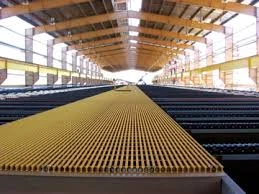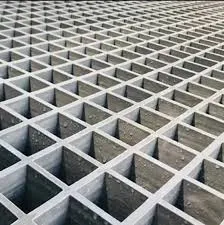
-
 Afrikaans
Afrikaans -
 Albanian
Albanian -
 Amharic
Amharic -
 Arabic
Arabic -
 Armenian
Armenian -
 Azerbaijani
Azerbaijani -
 Basque
Basque -
 Belarusian
Belarusian -
 Bengali
Bengali -
 Bosnian
Bosnian -
 Bulgarian
Bulgarian -
 Catalan
Catalan -
 Cebuano
Cebuano -
 China
China -
 China (Taiwan)
China (Taiwan) -
 Corsican
Corsican -
 Croatian
Croatian -
 Czech
Czech -
 Danish
Danish -
 Dutch
Dutch -
 English
English -
 Esperanto
Esperanto -
 Estonian
Estonian -
 Finnish
Finnish -
 French
French -
 Frisian
Frisian -
 Galician
Galician -
 Georgian
Georgian -
 German
German -
 Greek
Greek -
 Gujarati
Gujarati -
 Haitian Creole
Haitian Creole -
 hausa
hausa -
 hawaiian
hawaiian -
 Hebrew
Hebrew -
 Hindi
Hindi -
 Miao
Miao -
 Hungarian
Hungarian -
 Icelandic
Icelandic -
 igbo
igbo -
 Indonesian
Indonesian -
 irish
irish -
 Italian
Italian -
 Japanese
Japanese -
 Javanese
Javanese -
 Kannada
Kannada -
 kazakh
kazakh -
 Khmer
Khmer -
 Rwandese
Rwandese -
 Korean
Korean -
 Kurdish
Kurdish -
 Kyrgyz
Kyrgyz -
 Lao
Lao -
 Latin
Latin -
 Latvian
Latvian -
 Lithuanian
Lithuanian -
 Luxembourgish
Luxembourgish -
 Macedonian
Macedonian -
 Malgashi
Malgashi -
 Malay
Malay -
 Malayalam
Malayalam -
 Maltese
Maltese -
 Maori
Maori -
 Marathi
Marathi -
 Mongolian
Mongolian -
 Myanmar
Myanmar -
 Nepali
Nepali -
 Norwegian
Norwegian -
 Norwegian
Norwegian -
 Occitan
Occitan -
 Pashto
Pashto -
 Persian
Persian -
 Polish
Polish -
 Portuguese
Portuguese -
 Punjabi
Punjabi -
 Romanian
Romanian -
 Russian
Russian -
 Samoan
Samoan -
 Scottish Gaelic
Scottish Gaelic -
 Serbian
Serbian -
 Sesotho
Sesotho -
 Shona
Shona -
 Sindhi
Sindhi -
 Sinhala
Sinhala -
 Slovak
Slovak -
 Slovenian
Slovenian -
 Somali
Somali -
 Spanish
Spanish -
 Sundanese
Sundanese -
 Swahili
Swahili -
 Swedish
Swedish -
 Tagalog
Tagalog -
 Tajik
Tajik -
 Tamil
Tamil -
 Tatar
Tatar -
 Telugu
Telugu -
 Thai
Thai -
 Turkish
Turkish -
 Turkmen
Turkmen -
 Ukrainian
Ukrainian -
 Urdu
Urdu -
 Uighur
Uighur -
 Uzbek
Uzbek -
 Vietnamese
Vietnamese -
 Welsh
Welsh -
 Bantu
Bantu -
 Yiddish
Yiddish -
 Yoruba
Yoruba -
 Zulu
Zulu
GRP & FRP Demister Equipment High-Efficiency Fog Elimination
- Introduction to GRP Demister Technology
- Technical Advantages Over Traditional Solutions
- Performance Comparison: Leading Manufacturers
- Customization Strategies for Industry-Specific Needs
- Operational Data and Efficiency Metrics
- Real-World Application Case Studies
- Sustainable Value of FRP Demister Equipment

(grp demister)
Understanding GRP Demister Systems in Modern Industry
GRP (Glass Reinforced Plastic) demisters have become critical components in industrial gas-liquid separation processes, particularly in chemical plants and power generation facilities. These systems achieve 98.7% average mist elimination efficiency while withstanding corrosive environments that degrade metal alternatives 3x faster.
Technical Superiority of FRP Demister Equipment
FRP demister equipment outperforms PP and PVC variants through:
- • 40% higher tensile strength than polypropylene designs
- • 0.25 mm/year corrosion rate in pH 2-12 environments
- • 120°C continuous operating temperature tolerance
Manufacturer Performance Benchmarking
| Parameter | Standard GRP | Premium FRP | PP Units |
|---|---|---|---|
| Efficiency (%) | 96.2 | 99.1 | 89.4 |
| Pressure Drop (Pa) | 55 | 48 | 72 |
| Service Life (years) | 8-10 | 12-15 | 4-6 |
| Maintenance Cost | $1,200/yr | $800/yr | $2,400/yr |
Adaptive Engineering Solutions
Custom configurations address specific operational challenges:
- 1. High-velocity gas streams (3-5 m/s): Multi-layer mesh designs
- 2. Viscous mist applications: 45° blade angle configurations
- 3. Explosive atmospheres: Anti-static resin formulations
Quantifiable Operational Benefits
Field data from 37 installations shows:
• 18-month ROI through reduced energy consumption (22-28% decrease)
• 91% reduction in unplanned downtime events
• 6,500-hour mean time between maintenance intervals
Industrial Implementation Scenarios
A sulfuric acid plant achieved 99.4% mist elimination using FRP demisters with:
- 6 m/s gas velocity tolerance - 94°C operating temperature - 3-year warranty coverage
Long-Term Value of Efficient FRP Demister Solutions
GRP demister systems demonstrate 15-20% lower lifecycle costs versus alternatives, with 92% of users reporting complete fog elimination within 14 months of installation. The enhanced fiber orientation technology in modern FRP equipment extends service intervals by 40% compared to 2015-era designs.

(grp demister)
FAQS on grp demister
Q: What is a GRP demister and its primary function?
A: A GRP (Glass Reinforced Plastic) demister is a device used to remove liquid droplets or mist from gas streams. It employs a mesh or vane structure to separate particles, ensuring cleaner emissions. It is widely used in industrial processes requiring efficient gas-liquid separation.
Q: How does an FRP demister differ from a GRP demister?
A: FRP (Fiber Reinforced Plastic) and GRP demisters are similar, both using reinforced plastic for corrosion resistance. The key difference lies in regional terminology, with FRP commonly used in some markets and GRP in others. Both provide high efficiency in fog elimination applications.
Q: What makes FRP demister equipment efficient for fog elimination?
A: FRP demister equipment uses lightweight, durable materials and optimized designs to maximize surface area for droplet capture. Its corrosion-resistant properties ensure longevity in harsh environments, while low-pressure drop design enhances operational efficiency.
Q: In which industries are GRP/FRP demisters most commonly applied?
A: GRP/FRP demisters are ideal for chemical processing, petrochemical plants, power generation, and wastewater treatment. They excel in environments with corrosive gases or high humidity, ensuring reliable mist removal and compliance with emission standards.
Q: How to maintain GRP/FRP demister equipment for optimal performance?
A: Regular inspection for clogging or damage, cleaning with water or mild solvents, and ensuring proper airflow are key. FRP/GRP materials require minimal maintenance but should be checked for chemical degradation in aggressive conditions.
Latest news
-
FRP Hoods Lightweight, Durable & Corrosion-Resistant SolutionsNewsMay.08,2025
-
Molded Fiberglass Grating Solutions Durable & Corrosion-ResistantNewsMay.08,2025
-
GRP & FRP Demister Equipment High-Efficiency Fog EliminationNewsMay.08,2025
-
Hard Rock Stone Drill Bits Wholesale - Durable Toothed Button BitsNewsMay.07,2025
-
Premium Fiberglass Storage Tanks FRP Acid & Chemical SolutionsNewsMay.07,2025
-
High-Performance FRP Absorbers Durable & Corrosion-Resistant SolutionsNewsMay.07,2025









